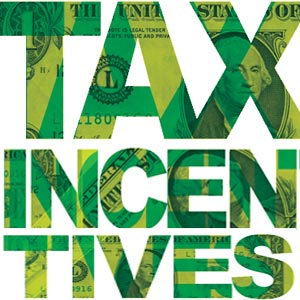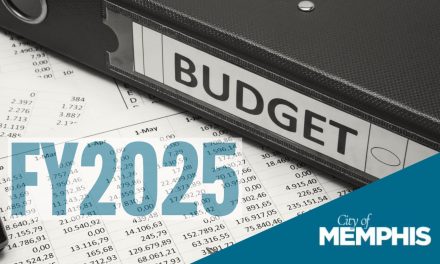For all the sturm and drang earlier this year about PILOTs and EDGE, it was in retrospect more of a pantomime whose actors already knew the script.
Despite the ersatz comprehensive review, little that could be called real reform took place, and as a result, EDGE in particular, after blistering criticism from Chamber officials, not only has the same substantive policies but has moved even more into becoming a kingdom of its own.
All in all, the lack of a serious, independent analysis belies the about $800 million in city and county taxes that were waived in the past 10 years – not just by EDGE but by the myriad of agencies given the power to eliminate taxes at a time when both governments were scratching for more funding for vital services.
In 2009, our community was reeling from the Great Recession when Memphis and Shelby County took a body blow to the economy. Recasting the authority of the Memphis and Shelby County Industrial Development Board into EDGE was considered the big idea that was supposed to unleash smarter economic development planning and a clearer and shared plan of action.
Defaulting To What Is Easiest
Since its creation in 2011, however, EDGE has largely been more predictable than innovative, more business as usual than thinking outside the box, more rationalizations about competing with North Mississippi, and more dependency on the transportation, distribution and logistics sector than gaining a stronger foothold in the economy of the future.
Today’s boom in development, said to be almost $15 billion, masks the lethargy within the economic development system and the gaps between major wins although all of us hope that Indigo Ag can become an industry sector for the next generation.
And all the while, our community continues to default to what is easy: the continued forgiveness of taxes for companies and developers which shifts the cost of their public services onto homeowners and small business owners.
EDGE’s excessive largesse can’t be blamed totally on the city-county agency, because even before it came onto the scene, the administrations of Shelby County Mayor A C Wharton Jr. and Memphis Mayor Willie W. Herenton had already loosened up tax freeze policies with retention PILOTs which feel rubber stamped for any company that can say the magic words, “we’re considering a move to North Mississippi.”
Credible Calculations
It wasn’t just that there was a flimsy rationale – and even flimsier calculations of economic impact – behind the retention PILOTs, but it became the slippery slope that other questionable policies followed – tax forgiveness for a retail store, tax forgiveness for a hotel, and tax forgiveness for apartments.
All of these massive amounts were made somewhat more palatable by the incentives devoted to community development and the neighborhood economic revitalization, but the token amounts pale in comparison to where the major incentives are given.
Meanwhile, EDGE’s credibility has been undermined by other calculations to support its tax holiday policies for big companies and developers. In addition to the retention PILOT calculations, there are the benefit-to-cost ratio claims and the amount of local tax revenues generated by the agency.
For example, EDGE claims that it has provided $1,331,887,566 in local government taxes. It’s a remarkable number and raises the challenge of finding that impact in Memphis and Shelby County Government budgets. After all, $1.3 billion averages $162 million a year, or about $91 million a year for Shelby County and $71 million for City of Memphis (although for purposes of this estimate we are assuming that all projects are in Memphis). This level of tax infusion to local government amounts to about 50 cents on the city tax rate and 53 cents on the county tax rate.
What Plan? Which Plan?
Here’s the thing. We’re not suggesting that we are the experts in the mathematical computations, but more to the point, EDGE is now at a point where its calculations are widely questioned.
The answer to the most credible financial analyses possible is simple, and it is one that local legislators have studiously avoided: insisting on an independent financial analysis by someone employed by the city and county governments whose taxes are being eliminated.
Meanwhile, it seems that there is always discussion about an economic development plan that seems to be either just completed or under way, and yet, there still seems to be no dependable nexus between incentives and priorities. In fact, EDGE’s website still features its 2014’s “A Roadmap for Transforming the Metro Memphis Economy,” which largely ended up being a project where the report was the outcome. As far as we can tell, there is no report card tying our community’s economic performance to the report’s recommendations and the much ballyhooed process has had little real traction.
As for accountability, we commended EDGE for its sponsorship of the data warehouse and analysis program for the University of Memphis Sparks Bureau of Business and Economic Research’s The Memphis Economy website. The centerpiece of this valuable website were the comparisons of key economic indicators between Memphis and other benchmark cities, which could be used, EDGE said, as “an economic barometer for local elected officials, community leaders, economic development professionals, community-based organizations, and the general public.
Unfortunately, this website no longer has these comparisons, which was a rare attempt here in the kind of openness and honesty that can lead to more accountability.
Insider Spending
As for openness, EDGE’s intentions may be noble but it smacks of insider dealing when it appropriates revenues for its own special projects without consideration from the city and county governments that created it.
These appropriations are no small matter. A recent one was when EDGE took $1.7 million from the Depot Redevelopment Corporation and spent it for its own workforce program, Presidents Island, and grants to all the towns’ Chamber of Commerce that has the feel of political outreach.
These may be the best uses of this sizable investment, but perhaps, there are uses of the $1.7 million that would have more economic impact than these, and it could have been an interesting exercise to issue an RFP (Request for Proposals) for all ideas, which could then be evaluated with broader input and evaluation. At the least, it seems logical to seek the approval of the city and county legislative bodies.
We are struck by how quickly some local legislators like Shelby County Commissioner Brandon Morrison parrot the threadbare talking points justifying the process that forgives taxes for some of our most prominent companies. She was accurate when she said that companies in Memphis pay the highest tax rate in Tennessee (ignoring the fact that small business and a city with a large percentage of working poor are in effect paying the costs of services of these much large companies, not to mention a city with a large percentage of working poor), but it begs the question that if the tax rate is so onerous, how is it that Memphis and Shelby County are in the midst of a development boom?
Making Income Increases The Priority
Despite the realities of per capita incomes in Memphis, the minimum wage required for a PILOT from EDGE is $12 an hour at a time when $15 an hour is widely treated as a livable wage. Apologists for the EDGE policy act as if it’s just too risky to require companies to pay workers more although some cities like Indianapolis, which also has a large transportation, distribution, and logistics sector anchored by a FedEx hub, have already raised their minimum wage requirements for incentives to $18 an hour.
It’s been said, in defense of the local wage threshold, that $12 an hour goes a lot farther in Memphis because of the lower cost of living. Curiously, no one mentions that Memphis also has one of the lowest costs of operating a business in the country when doling out tax freezes.
As for the per capita incomes, it’s often treated as if this should not be a measurement used by PILOT agencies as a test of its effectiveness, but that said, every public program in this community should be weighed for how it will increase incomes.
After all, closing the racial gap in incomes in the Memphis region would stimulate $22 billion more in GDP. It’s hard to think of another priority that has greater economic development potential but only if we act with intentionality.
Our Children’s Poor Odds
It ignores the sobering fact: children who are persistently poor – living in poverty for more than half of their lives – have significantly lower odds of succeeding economically as adults. In the Memphis region, a child raised in the bottom fifth of income has the worst odds of any region in the continental U.S. in moving to the top fifth.
The child’s chances: 2.6%.
In other words, it is in everyone’s enlightened best interest – of not morality – to campaign for these children to have better odds for the future, but more to the point, it is an imperative for agencies waiving about $75 million in city and county taxes every year to directly address higher incomes and lower poverty as measurable priorities.
As for our investment in children, even the most ardent supporter of PILOTs has to ask why the school systems, which are not held harmless, are paying a price every time a tax freeze is approved. Today, that amounts to about $10-12 million a year that would otherwise go to education.
Finding Our Balance
It’s nothing short of amazing that any agency essentially has unbridled power to deprive local governments of much-needed funding for services or which could reduce the tax rate. We have become accustomed to the politically driven flare-ups that ultimately accomplish little in the way of reform in policies or greater accountability to the taxpayers.
Despite all the hyperbole to the contrary, there is no conclusive evidence that these kinds of incentives yield the results so often claimed for them. As a State of Tennessee research report concluded: “…abatements are not the most important determinant in site selection especially when comparing metropolitan areas. When the process is taking place, many factors are considered, such as quality and availability of labor, infrastructure, access to major highways, access to specific markets and the quality of the community.
“Surveys have shown that abatements and taxes are not the most important factor when considered where to locate a business…However, after years of research, there is no consensus among researchers on the effects of these incentives, and most research recommends a middle ground of targeting use of incentives but not ending their use.”
That sums up our opinion as well, but to find that reasonable middle ground, we need the independent, objective analysis of the tax freezes’ effectiveness. Without that, we have plenty of opinions but no dependable facts.
***
Join us at the Smart City Memphis Facebook page for daily articles, reports, and commentaries relevant to Memphis and the conversations that begin here.





Thank you Smart City. Where do you start ? 1) It’s not that Indy and Nashville demand more than Memphis for minimum wage considerations, it’s that they demand 50% more. 2) It’s not that our total job incentives are more than Nashville or Indy at $500M+. It’s that they are 50% more than Indy and Nashville combined at $335M. 3)It’s not the oversight process is less than optimal, it’s that oversight and review of 9 abating boards has not even been scheduled as called for by Commission resolution after 9 Months. 4) it’s not that the workforce development system was botched from the top while incentives roar under a “Workforce is #1 priority” pronouncement, it’s that the top is dismissing one of it biggest economic development advantages in a youthful population as most cities move forward with major concerns of an aging older population. 5) it’s not that Economic development projections are rosey. It’s that entire accounting categories were omitted from the analysis. 6) it’s not that Economic measurement is less than optimal. It is there is none. 7) it’s not that a plan for economic development has not ever existed. It’s there is not even a measurable definition available for economic development. 8) it’s not that Memphis paid more than Indy and Nashville per real job employed at $2.5K per job. It’s Memphis paid almost 500% more at $14.5k. Anyway here is some real Measurement http://mcclmeasured.net/realmeasurement/